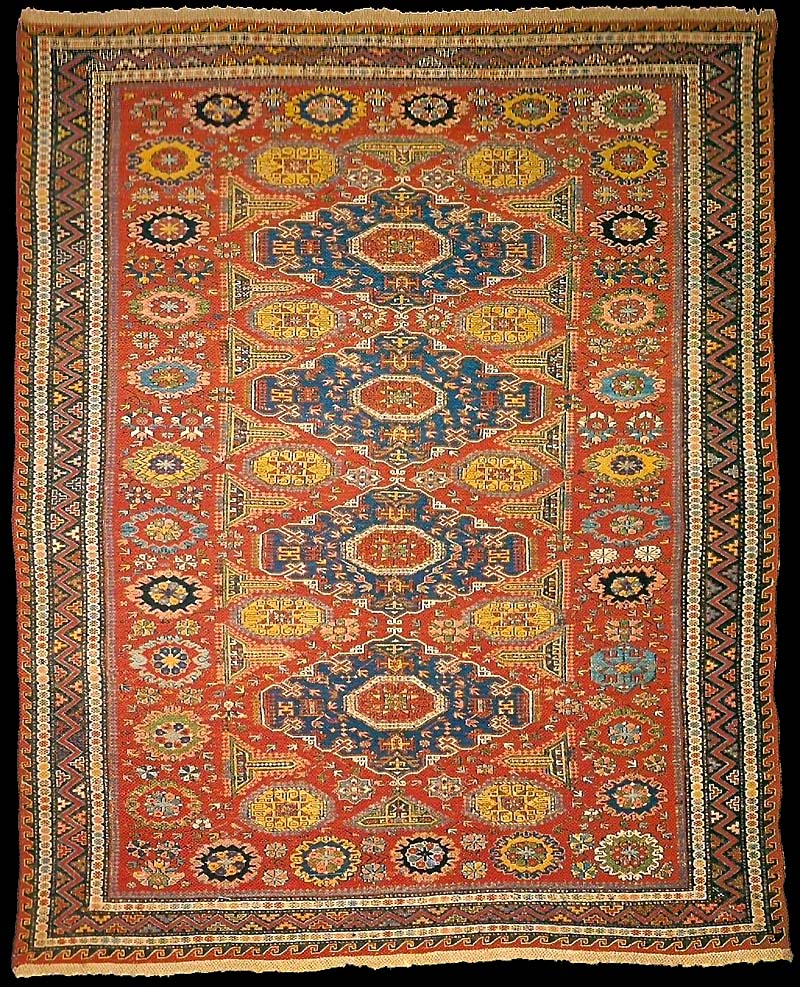|
19th century, 7'10"
X 6'2" [m. 2.42 X 1.90]
Warp: wool
Weft: wool, one shoot after each row of knots
Knotting: Soumak, flat weave, wool
Aside from the distinctive flat stitch, the whole design of this rug is what
makes a Soumak. Each of the borders—running dog, snowflake, running vine,
and the narrow inside crenellated edge—is almost always seen in these rugs.
The four medallions in the field with diagonal crosses on the edge, the
octagons decorating red the medallions and the field, the black outlines,
the anvils and the colors are all typical. The octagons are reminiscent of
Turkomen elephant's feet, where they probably originated. Here the
background is a rich red, the large medallions blue, the smaller ones
yellow, blue, green, white, and pink.
In each of the
lozenges are two signs, one rather like the Chinese shou and the other
similar to the sign for
a happy marriage. Next to the bottom medallion is a figure of a man who
might be the weaver. The size of the followers circling the field is very
unusual.
The borders are much closer to the anvils, and there are no flowers. In this
case the flowers serve almost as a wide inner border and appear to make the
medallions float on red.
Soumak rugs take
their name either from the town of Shemakha or from the weaving technique.
They are woven in practically all districts of the Caucasus, in a flat chain
stitch that encircles two threads of weft at once and nestles on the
diagonal against the next knot. The ends at the back hang loose and long, so
the group is easy to recognize. From the front a Soumak looks like a
threadbare rug.
Soumak rugs are normally woven of a red-brown and a dark blue, but the early
ones, like this one, contained a lot of yellow, white, and red.
published at Luciano Coen & Louise Duncan's "The Oriental Rug" plate no: 77
 |
